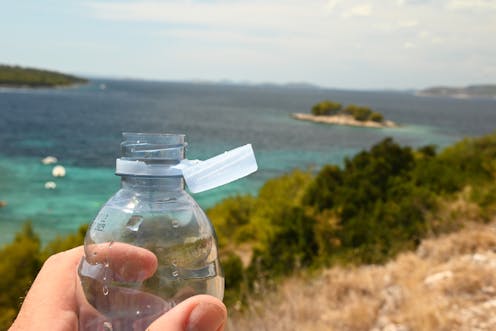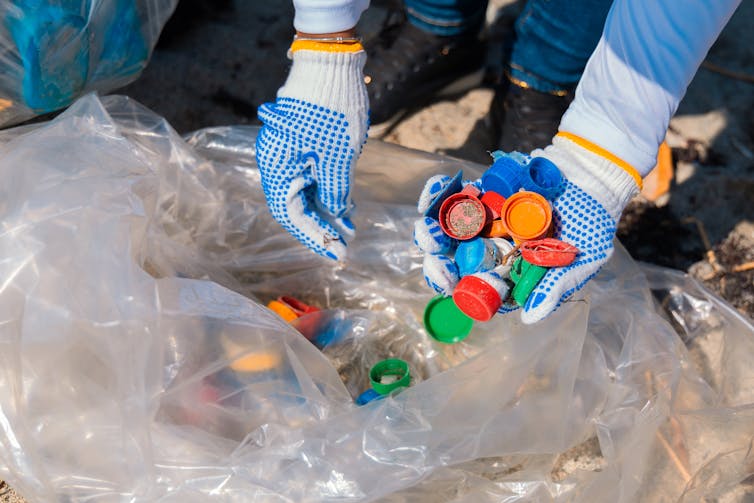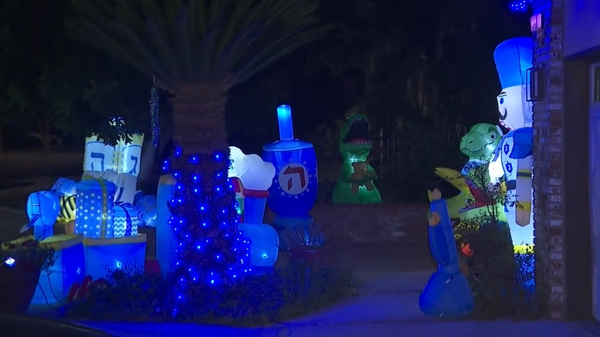
You may have bought a drink recently and noticed something odd: the once removable cap is now tethered to the bottle by a small strip of plastic.
An EU directive was enacted in July, requiring that all single-use bottles have caps that remain attached. This is one of several policies designed to limit the amount of plastic litter – particularly the caps from single-use plastic bottles which are far more likely to find their way into the environment and pose an enormous risk to wildlife.
Manufacturers have included the tether on bottles sold across the European market, including in the UK. It is time everyone got on board. In my opinion, this tiny adjustment is the first effective anti-littering policy that contemporary politics has come up with.
The design of a product affects how readily it becomes litter, and this is especially true for bottle caps. Tethered caps are not easily removed from plastic bottles – they are difficult to throw away even if someone wanted to.
The initiative is modelled on a packaging change in the 1980s. Drink cans used to have a fully detachable pull tab, but being small and useless, these were often discarded when people opened them. Designing a tab that remained attached prevented these sharp hazards from accumulating in the environment, where they could cause injuries.
Read more: Ranked: the environmental impact of five different soft drink containers
Plastic bottle lids are now among the top ten litter items found in rivers and the ocean. In the UK, 2023 beach surveys listed bottle lids as the third most common type of litter, while on the Dutch North Sea coastline, surveys recorded up to 128 bottle caps for each kilometre of beach in 2016.
Bottle caps are also one of the most common items consumed by marine animals. Made with a more buoyant type of plastic, bottle caps also travel further across oceans than the bottles they are sold with.

A tether creates one item of litter, not two, that is easier to pick up and less likely to be ingested (after all, most birds can’t eat an entire bottle).
Will recycling rates improve?
Caps are smaller, typically dyed and made of a different type of plastic than the bottle they are attached to, so they need to be recycled separately. Whether you can recycle bottle caps locally depends on your provider, which may categorise them as a recycling contaminant.
Even when plastics are recycled, the process creates a lower-quality product which cannot itself be recycled. Most of the waste sent for recycling is diverted to landfill – Europe recycles 12.4%, the US only 4.5%.
More time is needed to evaluate the impact of this shift, but there is a chance that tethered bottle caps could lead to higher instances of plastic going to landfill, as the caps must be mechanically removed. However, the tether may also make it easier to find and separate caps from bottles.
It is worth noting that recycling has never been a realistic solution to the overproduction and accumulation of plastic. A legal suit in California recently claimed that plastic producers have exaggerated the recyclability of their product to appease public opposition to plastic pollution.
Legislation could solve some of the issues stemming from tethered lids. The UK aims to establish a national bottle return scheme, and will need new systems for handling mixed-material recycling anyway (not only bottles and lids, but coffee cups, tetra packs and straws, among other items). Elsewhere, legislation could soon fine producers that fail to address the environmental consequences of the packaging they make.
Trying to solve littering by asking the public to stop is not working. Tethered bottles caps are a refreshing idea that puts the onus on those pumping out millions of litter-able items in the first place.
Before, you had to try not to litter. Now, you have to try to litter. Doesn’t that seem easier?

Don’t have time to read about climate change as much as you’d like?
Get our award-winning weekly roundup in your inbox instead. Every Wednesday, The Conversation’s environment editor writes Imagine, a short email that goes a little deeper into just one climate issue. Join the 35,000+ readers who’ve subscribed so far.
Randa Lindsey Kachef does not work for, consult, own shares in or receive funding from any company or organisation that would benefit from this article, and has disclosed no relevant affiliations beyond their academic appointment.
This article was originally published on The Conversation. Read the original article.







